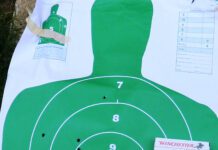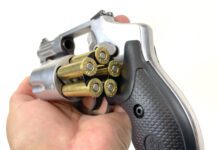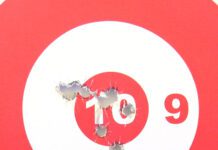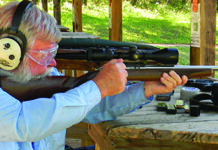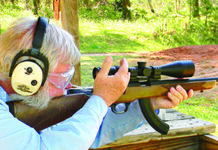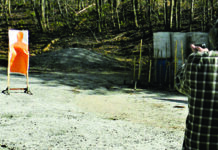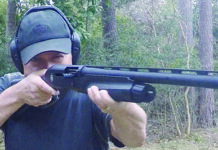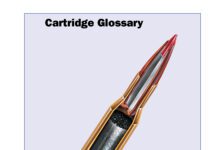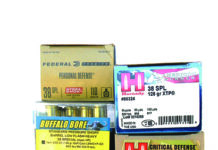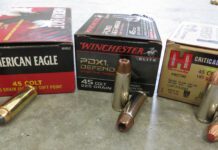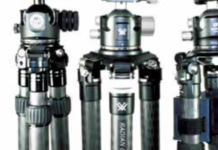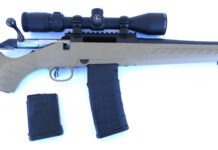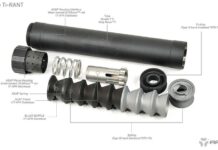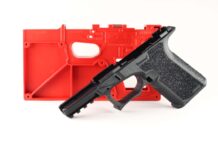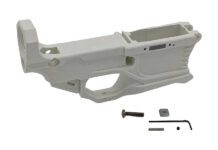Three Small 45 Autos: The New SIG Sauer 1911 C3 Is Superior
An the opinion of many experienced shooters, the 45 Auto is the caliber of choice in self-defensive pistols. However, most of these guns, like the classic 1911 Colt, are big and heavy. Therefore, they often get left behind for a lighter piece, which generally is of lower power. If you still want the power of a 45, why not go to a smaller and lighter gun?
We found three such pistols for this test, and gave them a wring-out. They were a Colt CCO, no longer in the Colt stable but available on the used or new-old-service market for about $1250, depending on condition; the recently introduced SIG Sauer 1911 C3 No. 19GS0031, $1143; and a new PM45-series pistol from Kahr, the PM4543, $855. The Kahr was not quite the same setup but clearly had the same intent as the other two, to deliver big power in a smaller, lighter package.
Both the SIG and Colt had aluminum frames, and they featured the old Colt Officer's Model handle with the Commander-length slide. Most of our test group believes this is the ideal setup for a 1911-type 45 auto, but those with large, wide hands might prefer a gun like the lightweight Commander, which has a bigger grip. The Kahr had its usual ergonomically designed polymer grip with stainless slide, and of course was DAO. We tested with three types of ammunition, Federal 185-grain Hi-Shok JHP, Federal 230-grain ball, and with Cor-Bon 185-grain JHP. We also tried a few groups with Federal Gold-Medal Match, 185-grain TC bullets. Here's what we found.
45 Gap and 22 Ammo Choices
Three Small 45 Autos: The New SIG Sauer 1911 C3 Is Superior
An the opinion of many experienced shooters, the 45 Auto is the caliber of choice in self-defensive pistols. However, most of these guns, like the classic 1911 Colt, are big and heavy. Therefore, they often get left behind for a lighter piece, which generally is of lower power. If you still want the power of a 45, why not go to a smaller and lighter gun?
We found three such pistols for this test, and gave them a wring-out. They were a Colt CCO, no longer in the Colt stable but available on the used or new-old-service market for about $1250, depending on condition; the recently introduced SIG Sauer 1911 C3 No. 19GS0031, $1143; and a new PM45-series pistol from Kahr, the PM4543, $855. The Kahr was not quite the same setup but clearly had the same intent as the other two, to deliver big power in a smaller, lighter package.
Both the SIG and Colt had aluminum frames, and they featured the old Colt Officer's Model handle with the Commander-length slide. Most of our test group believes this is the ideal setup for a 1911-type 45 auto, but those with large, wide hands might prefer a gun like the lightweight Commander, which has a bigger grip. The Kahr had its usual ergonomically designed polymer grip with stainless slide, and of course was DAO. We tested with three types of ammunition, Federal 185-grain Hi-Shok JHP, Federal 230-grain ball, and with Cor-Bon 185-grain JHP. We also tried a few groups with Federal Gold-Medal Match, 185-grain TC bullets. Here's what we found.


